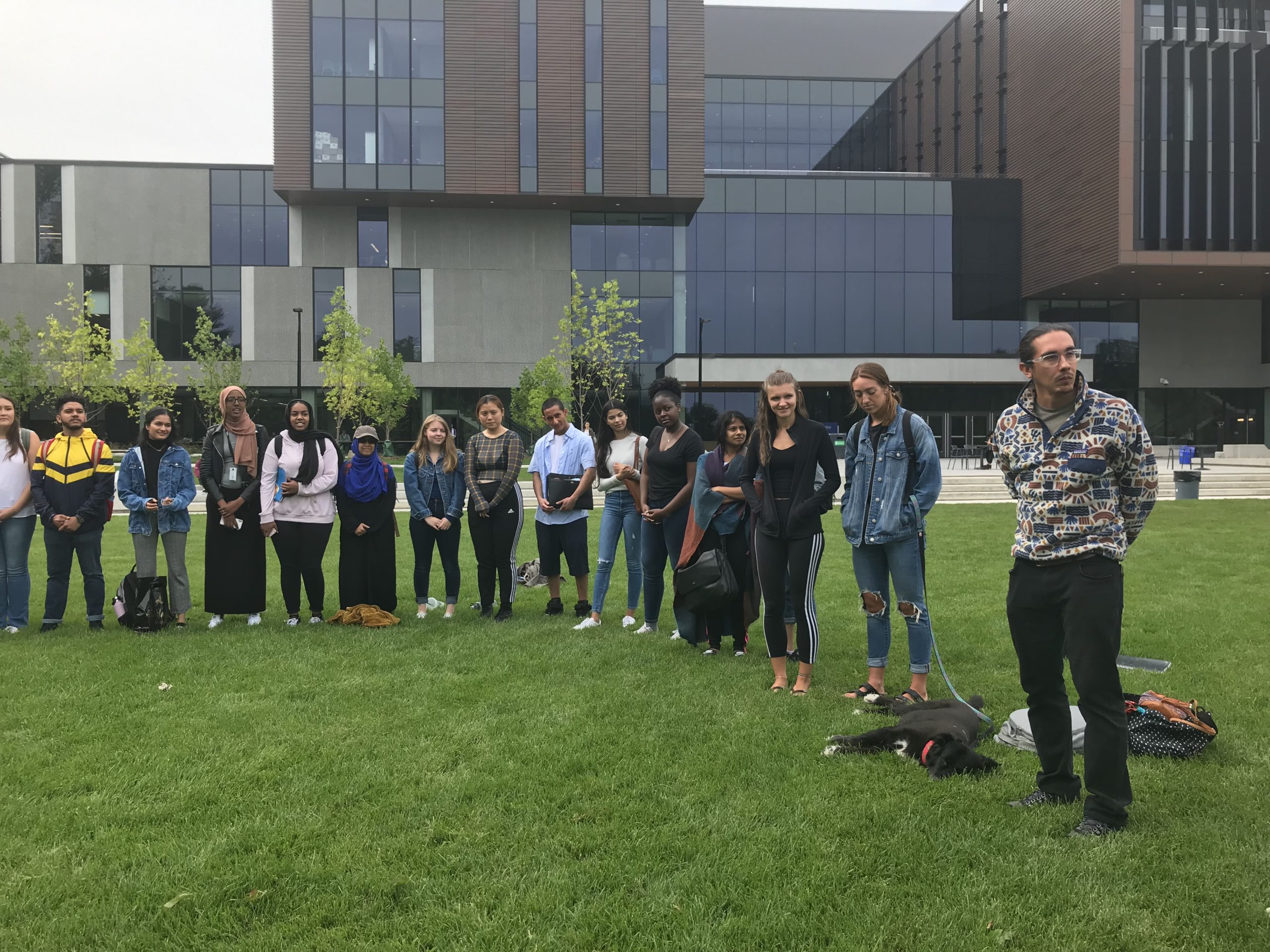
As a teaching stream professor, I am responsible for teaching six undergraduate courses in an Academic year. I am struck by the changing landscape of teaching in post-secondary education in general, and the field of anthropology specifically. Classroom discussions seem to be shifting in response to a changing student population. We are a seeing a greater diversity in students which can only enrich our field and we must adjust our ways of teaching in the Academy to reflect this transition.In our community-engaged learning course facilitated by an Indigenous Action Group composed of Indigenous scholars from across the University and a local Indigenous community (Mississaugas of the Credit First Nation). We start the course discussing and reading about positionality and then the students write self-reflections about how their own life experiences form their perception of reality. Dr. Andrew Judge, the Director of the Indigenous Studies at Conestoga College began this discussion with the ideas of relational responsibility in Indigenous research methodology and Indigenous cosmology. He took the students outside onto the lawn of the building to form a circle and he spoke eloquently about teaching and learning based on respect, reciprocity, and relational responsibility. 
Using the D.E.A.L. method (Describe, Examine, Articulate Learning) by Ash & Clayton(2009; 2004) students begin the course by describing a significant influence or moment in their life. They examine that experience in relation to the way that they view education, and then articulate their learning from the course experience in relation to their perceived notions of proper education.
Their responses were varied and unexpected. The majority of the students were members of an immigrant population, and their experiences related to a form of marginalization in their Canadian experience. They identified a connection with the Indigenous community on the negative impact that colonization has on their life experiences. The “Other” that we always try to prevent our students from seeing in anthropological research was at the front of most of their classrooms– not the populations that they were studying in their anthropology classes.
These students spoke of their identification as the “Other” in most of their classes. They did not identify with their predominantly Euro-western professors at the front of the room. This made them hesitant to pursue anthropology as they were not necessarily comfortable with the methods and literature that they were reading and learning.
There must a transition in the field of anthropology toward reconciliation and decolonization. We as a field must not only step back and reflect on the impact that our field has in support of colonization, but we must also take a seat at the back of the classroom to model a decolonized classroom. This is not an easy task because it requires a reassessment of traditional anthropological methods to give a first person voice to marginalized communities.
Ash, S., & Clayton, P. (2004). The articulated approach to guided reflection and assessment. Innovative Higher Education, 29(2): 137-154.
Ash, S. & Clayton, P. (2009). Generating Deepening and Documenting Learning: The power of critical reflection in applied learning, Journal of Applied learning in Higher Education, 1: 25.

Leave a Reply
You must be logged in to post a comment.